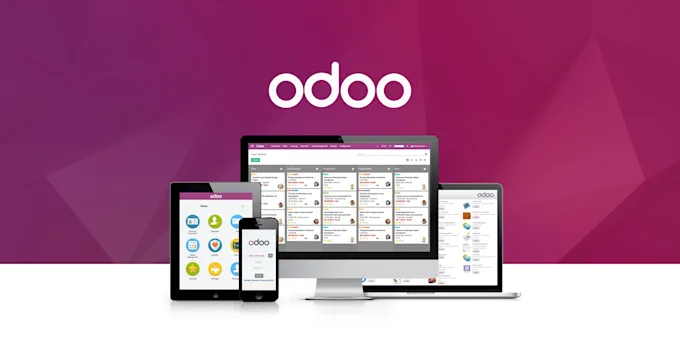Maximize Your Reach with Google Advertising Services
In today’s digital age, businesses must find effective ways to reach their target audience online. With billions of people using Google every day, Google Advertising Services offer a powerful platform to help businesses grow their online presence. Whether you are a small business or a large corporation, Google Ads can provide the tools and insights necessary to connect with customers and maximize your advertising budget. This article explores how to leverage Google Advertising Services to maximize your reach and drive business success.
Understanding Google Advertising Services
Google offers a comprehensive suite of advertising tools that allow businesses to promote their products or services across various platforms. These services include Google Search Ads, Google Display Network, YouTube Ads, Google Shopping Ads, and more. Each service is designed to target different types of audiences and serve various advertising goals.
The Google Ads Platform
Google Ads (formerly Google AdWords) is the main platform through which businesses can create and manage their ads. Through Google Ads, you can display text, image, video, or product ads to a specific audience. These ads appear on Google search results, websites within the Google Display Network (GDN), and on YouTube.
Key Benefits of Google Advertising
Google Ads provides several key advantages for businesses aiming to reach a larger audience:
1. Wide Reach and Global Audience
Google’s search engine processes over 3.5 billion searches per day, making it the most widely used search engine globally. Google Ads allows businesses to place ads on Google Search, Google Display Network, YouTube, and even within apps. This expansive reach ensures that your ads are shown to potential customers across various online platforms.
2. Targeted Advertising
Google Ads offers sophisticated targeting options that allow businesses to tailor their ads to specific audiences. You can target people based on demographics (age, gender, location), interests, online behavior, and even the device they are using. This level of targeting ensures your ads are shown to the right people, maximizing the likelihood of conversions.
3. Cost-Effective Advertising
One of the standout features of Google Ads is the pay-per-click (PPC) model. You only pay when someone clicks on your ad, making it a cost-effective way to advertise. Additionally, Google Ads allows you to set a daily or monthly budget, so you have control over how much you spend. This means you can tailor your campaigns to fit your budget without overspending.
4. Measurable Results
Google Ads provides detailed performance metrics that help you track the effectiveness of your campaigns. Metrics like clicks, impressions, click-through rates (CTR), conversion rates, and cost-per-conversion allow you to measure ROI and optimize your ads for better performance.
Types of Google Ads Campaigns
Google Ads provides different types of campaigns to suit various business goals. Each type of campaign has its own advantages and is ideal for specific advertising objectives.
1. Search Ads
Search Ads are the most common and widely used ad type. These text-based ads appear on Google search results pages when users search for relevant keywords. When a user types in a query that matches the keywords you’ve selected for your campaign, your ad will appear at the top or bottom of the search results. This ad type is perfect for businesses looking to capture intent-driven traffic.
2. Display Ads
Display Ads appear on websites within the Google Display Network (GDN). These can be static or animated images, and they appear on various websites that are part of Google’s network. Display ads are particularly useful for brand awareness campaigns, as they can reach a wide audience and visually engage users.
3. Video Ads
YouTube Ads allow businesses to reach potential customers with video content. Video ads can be shown before, during, or after YouTube videos. You can also create skippable or non-skippable ads to cater to different viewing preferences. Video ads are ideal for businesses looking to engage customers with more dynamic content.
4. Shopping Ads
Google Shopping Ads allow e-commerce businesses to promote their products directly on Google Search. These ads include product images, prices, and store information, providing users with a clear overview of the products before they click. Shopping ads are highly effective for retailers looking to drive traffic to their online store.
5. App Ads
App Ads promote mobile apps across Google Search, the Google Display Network, YouTube, and Google Play. With app ads, you can drive app downloads or in-app actions, targeting users who are likely to engage with your mobile app.
Best Practices for Running Google Ads Campaigns
To maximize your reach with Google Advertising Services, it’s important to follow best practices for creating and managing your campaigns.
1. Conduct Keyword Research
The foundation of any successful search ad campaign is thorough keyword research. Use tools like Google Keyword Planner to identify high-traffic keywords that are relevant to your business. Focus on long-tail keywords (phrases with three or more words) to capture more specific search intent. Additionally, consider negative keywords to prevent your ads from showing up for irrelevant searches.
2. Create Engaging Ad Copy
Your ad copy plays a critical role in attracting potential customers. Write compelling headlines and descriptions that clearly convey the value of your product or service. Include a call-to-action (CTA) to encourage users to take the next step, such as making a purchase, signing up, or visiting your website.
3. Optimize Landing Pages
Once users click on your ad, they should land on a page that is relevant to the ad they clicked. Ensure your landing page provides a seamless experience, loads quickly, and has a clear CTA. Optimizing landing pages for conversions will improve your overall ROI.
4. Use A/B Testing
A/B testing allows you to experiment with different ad variations, targeting settings, and landing pages to determine which combinations yield the best results. Regular testing helps you optimize your campaigns and improve performance over time.
5. Monitor and Adjust Campaigns Regularly
Google Ads provides detailed performance reports that allow you to track the success of your campaigns. Regularly monitor metrics like CTR, conversion rate, and cost-per-click (CPC) to identify areas for improvement. Adjust your campaigns accordingly, whether it’s refining your targeting, changing your ad copy, or reallocating your budget.
Conclusion
Google Advertising Services offer an incredible opportunity to reach a massive audience, engage potential customers, and drive measurable results for your business. By understanding the various ad types and following best practices for campaign management, you can optimize your ads to get the best return on investment.
Whether you’re looking to increase brand awareness, drive more website traffic, or boost sales, Google Ads provides the tools you need to succeed. Start by setting clear objectives, conducting thorough keyword research, and constantly refining your campaigns to ensure your advertising dollars are being spent effectively.
By harnessing the power of Google Advertising Services, businesses can significantly expand their reach, attract high-quality leads, and ultimately achieve greater business success in the competitive digital marketplace.



